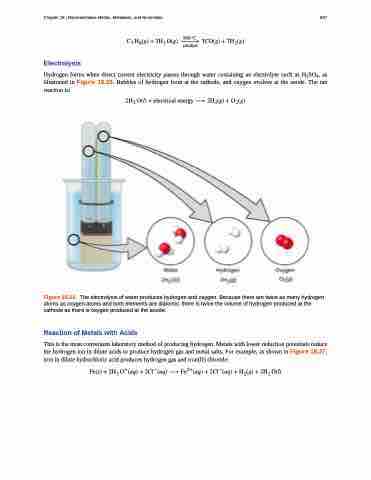Page 1007 - Chemistry--atom first
P. 1007
Chapter 18 | Representative Metals, Metalloids, and Nonmetals
997
��� ��
�� ����� � ��� ���� �������� ������ � ������
Hydrogen forms when direct current electricity passes through water containing an electrolyte such as H2SO4, as illustrated in Figure 18.26. Bubbles of hydrogen form at the cathode, and oxygen evolves at the anode. The net reaction is:
��� ���� � ���������� ������ � ������ � �����
Figure 18.26 The electrolysis of water produces hydrogen and oxygen. Because there are twice as many hydrogen atoms as oxygen atoms and both elements are diatomic, there is twice the volume of hydrogen produced at the cathode as there is oxygen produced at the anode.
Reaction of Metals with Acids
This is the most convenient laboratory method of producing hydrogen. Metals with lower reduction potentials reduce the hydrogen ion in dilute acids to produce hydrogen gas and metal salts. For example, as shown in Figure 18.27, iron in dilute hydrochloric acid produces hydrogen gas and iron(II) chloride:
����� � ��� ������ � �������� � �������� � �������� � ����� � ��� ����
Electrolysis
��������


